Allgemein
Leichtfüßiger Sprung
Santiago Calatravas Brücke in Venedig, die im September feierlich eröffnet wird, stellt einen enormen Fortschritt dar, nicht nur für den Architekten selbst, sondern auch für die mögliche künftige Entwicklung der Lagunenstadt. Der große Gesten und ausdrucksvolle Konstruktionen liebende Calatrava hat sich angesichts der überwältigenden historischen Textur der Stadt auf eine Brücke ganz ohne hoch aufragende Pylone oder dramatisches Tragwerk beschränkt. Zum Glück, denn an dieser nicht besonders breiten Stelle hätte derlei ein-fach lächerlich gewirkt. Stattdessen scheint sich die gewölbte Gehfläche einfach aus den zur Brücke führenden Bürgersteigen zu entwickeln, flankiert von zwei kleinen Brückenköpfen, die den sanften Bogen nur optisch halten. Das eigentliche Tragwerk scheint angesichts der beeindruckend leichten Konstruktion aus Betonfläche und Glasbrüstung unsichtbar. Dunkelrot gestrichen, zeigt es sich nur vom Boot aus. Und hier ist die Brücke wieder ganz Calatrava: Eng nebeneinanderliegende Rippen streben dem mittig liegenden Rückgrat der Brücke zu, in einem leicht nachvollziehbaren, fast schon dekorativen Rhythmus. Damit fügt sich die Brücke wie selbstverständlich in das Gewebe aus gotischem Maßwerk und maurischen Geometrien, das so typisch für Venedig ist. Calatrava zeigt mit dieser Brücke erstens, dass sich auch in Zeiten computergestützten Planens angemessene Lösungen für eine historische Umgebung finden lassen – ohne sie mit elektronisch generierten Formen zu erschlagen oder leistungsfähige Raumkonzepte hinter historisierenden Fassaden zu verstecken. Zweitens zeigt er Venedig einen Weg zur Weiterentwicklung: Moderne Bauten können offensichtlich verdeutlichen, wo wir herkommen und wohin wir gehen. ~dr
~Aaron Betsky
A Gentle Leap: Calatrava’s Venetian Bridge
Santiago Calatrava, the man who is ordaining giant corkscrews for cities from Malmö to Chicago, is best when he sticks to bridges. It is how he first became famous and, as it turns out, the one he has just designed for Venice is one of the best he has done. That is probably because it is the simplest: just one sweep of stone, glass and brass supported by a dark red skeleton that leaps for 94 meters across the beginning of the Grand Canal. To be opened this month by the President of Italy, the »Calatrava Bridge« is already the most exciting – and virtually only – piece of modern architecture in the Most Serene Republic.
Venice has not had a new bridge since 1934, when a relatively innocuous structure was built as part of the massive reconstruction of the unlovely backside of the islands, where almost everybody enters the city. The other two structures, the Rialto and the Accademia, are much more famous. While the former is one of the great examples of merging city and infrastructure, the latter is an unlovely example of utilitarian design that has been built in both steel and now stone. The ever-increasing traffic in Venice, now reaching 50 million visitors a year, necessitated the new bridge, which is for now just called »The Fourth Bridge,« though it is referred to by most Venetians as the »Ponte Calatrava.« Its much-delayed opening promises more: The city has plans for an underground subway and a high-speed connection to the mainland and airport, while the prospects for a new water gateway at that airport, to a design by Frank Gehry, have also brightened recently.
Calatrava’s bridge is controversial both because of its costs (rumored to be close to nine million euros, more than double the original estimate) and because it is not handicap accessible. The city promises that it is working on solutions for the second problem, but for now all that money got a bridge that works visually. It does so firstly because of what it does not do. It does not try to either refer to historical precedents or make too big a deal of its structural achievements. While the former strategy is what one might expect in a profoundly conservative city in which modern architecture is all but anathema, the latter is one of the largest problems with Calatrava’s bridge designs. Inspired by nature, or so he claims, the Spanish architect has a strong penchant for gigantic, leaning pylons and spreading, arching planes that look like wings. This is not such a big flaw when he is working at a very large scale, but in smaller bridges, such as a line of canal crossings near the Amsterdam airport, completed in 2005, this structural bravura just looks ridiculous. Venice has somehow avoided having either a copy of the Rialto or a land-bound version of the giant cruise ships that overwhelm its waterways.
In this design there are no visible pylons, and the wings are contained underneath the surface on which one walks. The bridge seems to be a continuation of the stone sidewalks on either side, growing out of them with broad, but also very shallow, travertine-covered steps that spread ever so gently to welcome visitors and gather into a tight line as the bridge begins its vault over the Grand Canal. The steps are flanked by two concrete prows that are just heavy enough to hold the light arch visually, anchoring it to the ground with an image whose bow-like shape brings to mind the maritime character of this city. These elements are in fact part of a mainly concealed structure that makes the whole thing possible. Calatrava has chosen to almost completely mask the complex anchoring systems that keep his line from sinking into the mud and muck.
Out of this base then comes that single arch. The steps disappear into a line of ripples, while the glass railings give precedent to the view down this fabled waterway (though it is, in truth, not at its most beautiful here) and also make the bridge seem to disappear. A flanged brass L-shape fits neatly over the top, glinting in the sun and giving the bridge an elegant aspect where the hand touches it. Because of its proportions, Calatrava’s creation seems much lower than either the Rialto or Accademia, but as soon as one of the vaporettos glides underneath it, you realize that it is in fact a tall and rather massive piece of construction.
From that vaporetto, you see the part of the structure that does all the work. The red ribs spread, in a manner you might expect from Calatrava, but they are tightly spaced and crudely soldered, so they have little of the sense of impossibly thin elements leaping like Icarus to the sun. Instead, their rhythms give a sense of scale that is surprisingly intimate and easy to understand. The ribs also lean towards the center from either side, drawing your eye along the arc’s movement. The pattern is almost decorative.
That is what is so surprising about this bridge. Calatrava, who became famous for feats of engineering daring-do clothed in forms that were even larger than they needed to be, has here made something completely Venetian. It is a sensuous and even sinuous shape that moves up like one of Tiepolo’s ceilings. The flanges, ribs, spreading planes and prows seem completely at home in a city where Moorish geometries mix with Gothic filigree to create a collage of patterns floating like a mirage over the water. Calatrava has almost made his bridge disappear into the myth of Venice that has for so long belied its material reality.
There is a bigger message here. If Calatrava can realize that the right thing to do in this situation was to repress and suppress his instincts for grand gestures, then perhaps both he and others who have become so exhilarated by the freedom modern computer modeling techniques have given them can do the same. Being free to create any form you can imagine does not mean that following that liberty is necessarily the path to beauty or appropriate form. Nor does it mean that you should use the power of the computer to create efficient spaces or objects and then hide them with historical structures. It means having the discipline to shape the lines you can develop into the built forms that open up new spaces within our world, but in such a way that they resonate with and engage the past. Let it be new, but let the new allow us to understand both where we are coming from and where we are going.
This is especially true of infrastructure, which is the physical representation of where we are and what we share together. Rather than expressing the will of one institution or individual, or monumentalizing past achievements, infrastructure shows our commitment of resources to creating the kind of connective devices that tie us together in the simplest of forms. It is a sad comment about our society that the most we can usually find in recent bridges, tunnels, railroad stations and airports is bigness and the glorification of structure.
In Venice, Calatrava had a wonderful task. He just had to make a simple pedestrian bridge and he had to work in a city that respects overall pattern and shared space over avenues, monuments and empty expressions of either structural or political power. He also had the freedom to make something thoroughly modern, which is to say something that showed how Venice could and perhaps should develop. Luckily, he understood his situation and responded with a simple piece of architecture that can inspire future gestures towards a stronger social fabric.
Aaron Betsky ist Direktor des Cincinnati Art Museum und Kurator der diesjährigen Architekturbiennale in Venedig. Bis 2006 leitete er das NAI, davor war er Kurator für Architektur, Design und Digital Projects am San Francisco Museum of Modern Art. Als studierter Architekt verfasste er rund ein Dutzend Bücher über Architektur und Design.
Teilen:





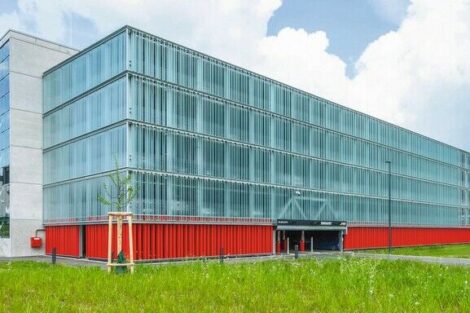
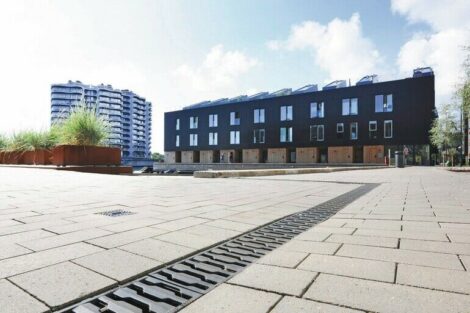


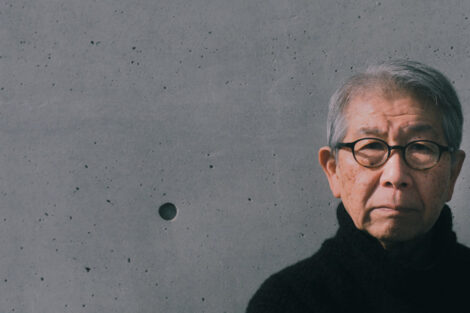
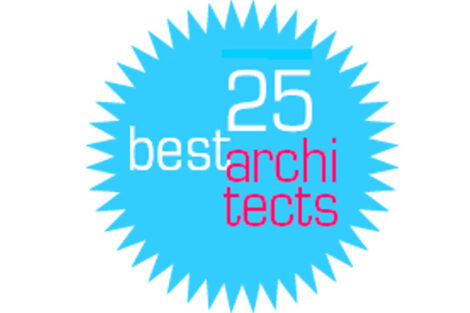


 Trockene Socken
Trockene Socken


